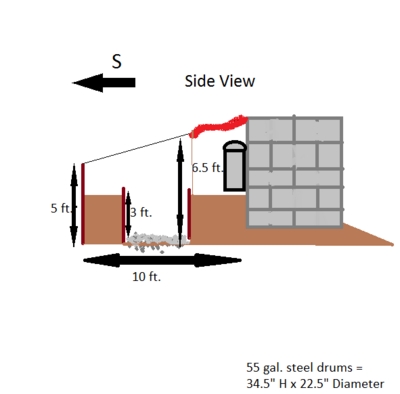




hardly ever leave the farm- don't want to- the internet saves me a million road, air and sea miles, provides at least 25 extra lifetimes, connects to friends who can stay on the subject, and gives me access to the brightest people conscious......
http://www.gardenfarm.biz








JadeQueen wrote:
Worms frequently ride into the house. I took one of the trees to table at a trade show for the permaculture guild, and when I got home, a worm jumped out and made a run for it. There wasn't anywhere for he/she to go, so I returned her/him to the pot.

hardly ever leave the farm- don't want to- the internet saves me a million road, air and sea miles, provides at least 25 extra lifetimes, connects to friends who can stay on the subject, and gives me access to the brightest people conscious......
http://www.gardenfarm.biz




http://www.greenshireecofarms.com
Zone 5a in Central Ontario, Canada
















Our inability to change everything should not stop us from changing what we can.









Our inability to change everything should not stop us from changing what we can.












My Homesteading Adventures
 1
1




There is nothing permanent in a culture dependent on such temporaries as civilization.
www.feralfarmagroforestry.com








bluesimplicity wrote:
I am so confused about whether to insulate the floor.
I am trying to find a recipe for the floor also, would appreciate comments from any who have an existing greenhouse, and are fire bricks suitable for under the rocket mass heater..or do we need other insulation below?
hardly ever leave the farm- don't want to- the internet saves me a million road, air and sea miles, provides at least 25 extra lifetimes, connects to friends who can stay on the subject, and gives me access to the brightest people conscious......
http://www.gardenfarm.biz













Thanks for building this forum, Paul.








Thanks for building this forum, Paul.








There is nothing permanent in a culture dependent on such temporaries as civilization.
www.feralfarmagroforestry.com





Mt.goat wrote:
Our local co-op has been getting lots of requests for local figs.Figs only grow OK here.The local small organic farmer next door is going to invest in a bunch of hoop houses in order to grow figs locally.It seems like it might use less resourses for people to eat what grows locally naturaly rather than adjust the local environment via greenhouses to have sub tropical food grown locally in a temperate region.
Thanks for building this forum, Paul.

 1
1




Our inability to change everything should not stop us from changing what we can.
 1
1




Robert Ray wrote:I have greenhouses and I am perfect according to the word of Paul.









Our inability to change everything should not stop us from changing what we can.








There is nothing permanent in a culture dependent on such temporaries as civilization.
www.feralfarmagroforestry.com
 1
1






 1
1




 1
1









 1
1




Our inability to change everything should not stop us from changing what we can.




BDAFJeff wrote:
I once read some info put out by the gov'nt of Ontario it said that one hectar of greenhouse costs about $1 000 000 to heat per year. That's alot of natural gas.








Kelson wrote:
been thinking about a hoop house made with light fabric which is waterproofed with beeswax. i am
looking for an alternative to plastic. nyone ever heard of or experienced such a thing?










|
eat bricks! HA! And here's another one! And a tiny ad!
Learn Permaculture through a little hard work
https://wheaton-labs.com/bootcamp
|






